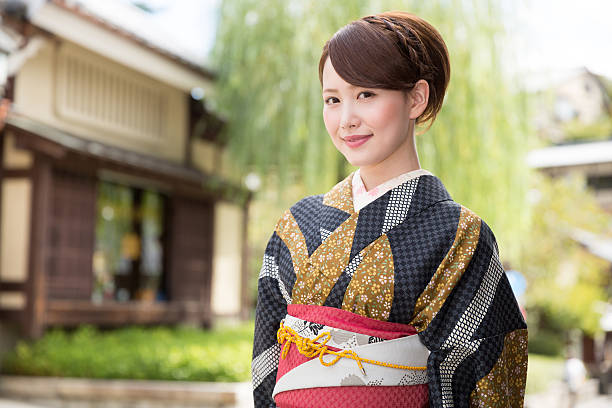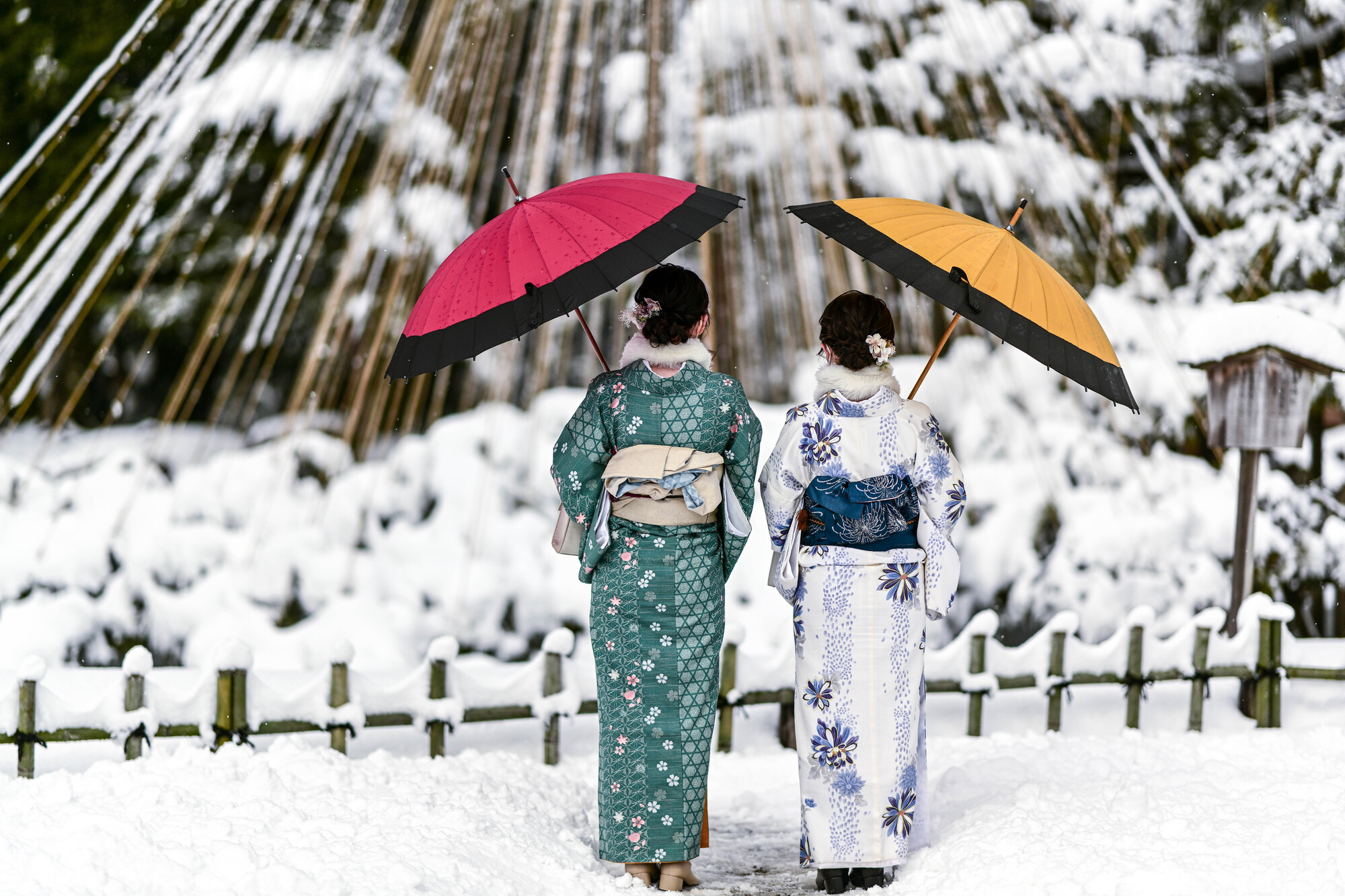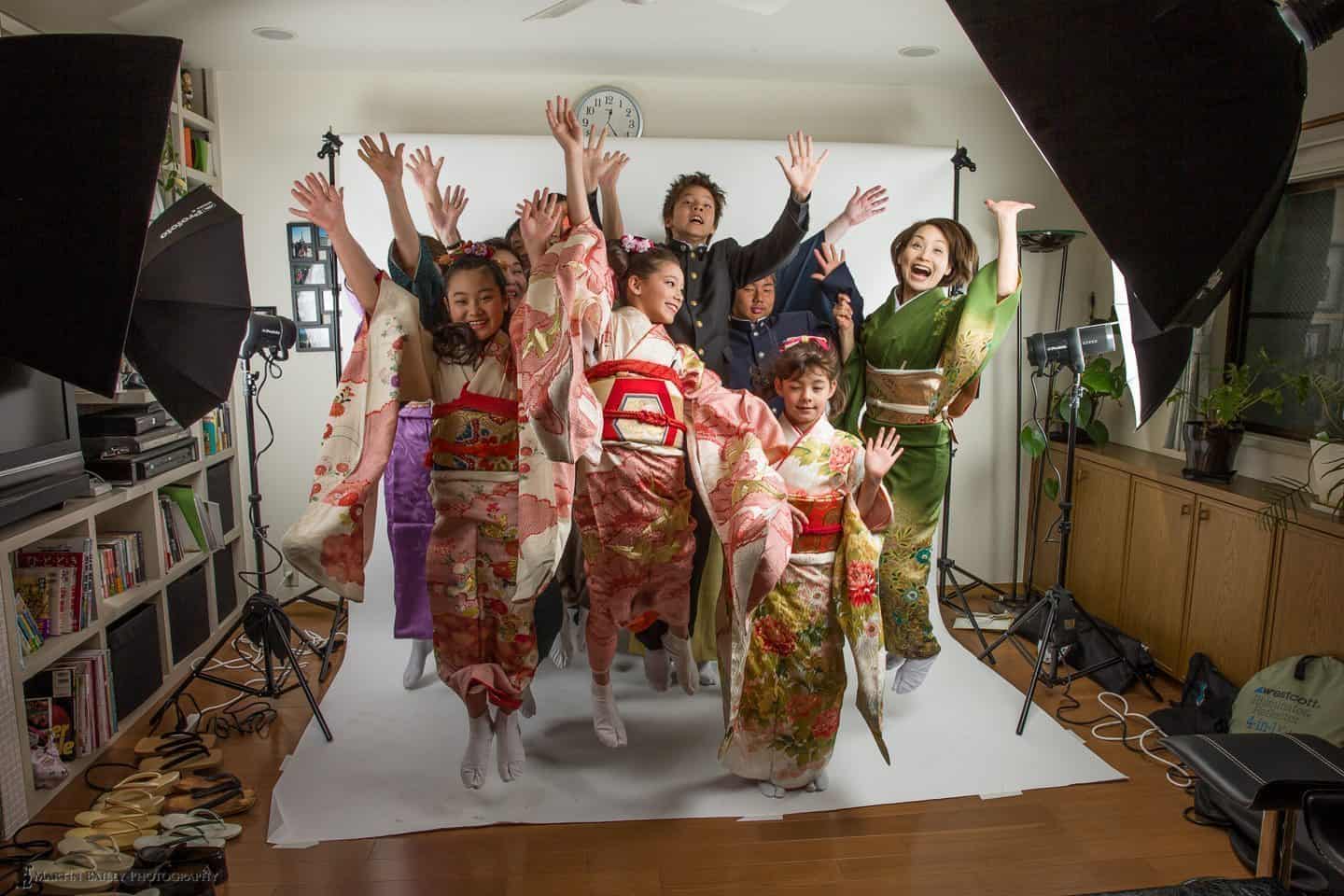The Ultimate Guide to Kimono Photography in Japan: Temples, Gardens, and Historic Alleys
Last updated: June 2025

Japan’s timeless beauty finds its perfect expression when traditional kimono meets stunning backdrops. Whether you’re planning a professional photoshoot or capturing memories during your cultural journey, choosing the right location for your kimono photography session can transform ordinary photos into extraordinary works of art.
In this comprehensive guide, we’ll explore the best locations for kimono photography in Japan, from sacred temples to blooming gardens and charming historic alleys. You’ll discover insider tips for timing, permissions, and creating Instagram-worthy shots that capture the essence of Japanese culture.
- Why Kimono Photography is Essential in Japan
- Top Temple Locations for Kimono Photos
- Best Gardens for Seasonal Kimono Photography
- Historic Alleys: Hidden Gems for Authentic Shots
- Seasonal Photography Guide
- Professional Photography Tips
- Permits and Permissions
- Best Times for Photography
- What to Wear and How to Prepare
- Conclusion: Creating Unforgettable Kimono Photography Memories
Why Kimono Photography is Essential in Japan
Kimono photography represents more than just wearing beautiful traditional clothing—it’s about immersing yourself in Japanese culture and creating lasting memories. The art of kimono photography combines traditional aesthetics with modern photography techniques, resulting in images that tell compelling stories.
Cultural Significance of Kimono Photography
Traditional Japanese kimono have been worn for over 1,000 years, representing different seasons, occasions, and social status. When you participate in a kimono photoshoot in Japan, you’re not just taking pictures; you’re participating in a cultural tradition that connects you to centuries of Japanese history and artistry.
Why Professional Kimono Photography Matters
Professional kimono photography sessions offer several advantages:
- Expert styling and fitting ensures authentic appearance
- Knowledge of best locations and optimal timing
- Cultural sensitivity and proper etiquette guidance
- High-quality equipment for stunning results
- Post-processing expertise to enhance natural beauty
For those seeking professional kimono photography services in Kyoto, AllPhoto Kyoto offers exceptional experiences that combine traditional aesthetics with modern photography techniques, creating unforgettable memories of your Japanese cultural journey.
Top Temple Locations for Kimono Photos
1. Fushimi Inari Taisha: The Iconic Torii Gate Experience
Fushimi Inari Taisha stands as one of Japan’s most photographed temple complexes, famous for its thousands of vermillion torii gates. This Kyoto temple offers unparalleled opportunities for dramatic kimono photography.
Best Photo Spots:
- The main torii tunnel entrance
- Smaller shrine areas with fewer crowds
- Mountain paths with scattered torii gates
- Traditional stone fox statues (Inari messengers)
Photography Tips:
- Visit early morning (6-7 AM) to avoid crowds
- The red torii complement warm-colored kimono beautifully
- Use the tunnel effect for depth in your compositions
- Respect other visitors and shrine protocols
2. Kiyomizu-dera Temple: Panoramic Views and Seasonal Beauty
This UNESCO World Heritage site offers breathtaking views of Kyoto and changes dramatically with each season, making it perfect for seasonal kimono photography.
Seasonal Highlights:
- Spring: Cherry blossoms frame the temple grounds
- Summer: Lush green landscapes provide vibrant backdrops
- Autumn: Maple leaves create stunning color contrasts
- Winter: Snow-covered grounds offer serene, minimalist compositions
Best Photography Areas:
- The famous wooden stage overlooking the city
- Traditional stone pathways
- Seasonal garden displays
- Historic wooden architecture details
3. Senso-ji Temple: Tokyo’s Ancient Heart
As Tokyo’s oldest temple, Senso-ji provides an authentic historical atmosphere that contrasts beautifully with modern city life.
Key Features for Photography:
- The impressive Thunder Gate (Kaminarimon)
- Traditional shopping street (Nakamise-dori)
- Main temple hall with traditional architecture
- Traditional lanterns and decorative elements
4. Meiji Shrine: Urban Oasis Photography
Located in the heart of Tokyo, Meiji Shrine offers a peaceful forest setting that creates stunning contrasts in kimono photography.
Unique Aspects:
- Ancient forest paths within the city
- Traditional Shinto architecture
- Seasonal festivals and ceremonies
- Peaceful, meditative atmosphere
5. Todai-ji Temple: Nara’s Majestic Setting
Famous for its giant bronze Buddha statue, Todai-ji Temple in Nara offers unique photography opportunities with friendly deer roaming the grounds.
Special Features:
- Interaction opportunities with Nara deer
- Massive traditional architecture
- Beautiful park settings
- Less crowded than Kyoto temples
Best Gardens for Seasonal Kimono Photography
Spring Garden Photography (March-May)
Cherry Blossom Season represents the pinnacle of Japanese garden beauty, making it the most sought-after time for kimono photography.
Top Spring Gardens:
- Maruyama Park, Kyoto: Famous hanami (cherry blossom viewing) spot
- Shinjuku Gyoen, Tokyo: Diverse cherry blossom varieties
- Philosopher’s Path, Kyoto: Romantic canal-side cherry trees
- Ueno Park, Tokyo: Historic park with over 1,000 cherry trees
Spring Photography Tips:
- Book sessions well in advance during peak season
- Early morning light enhances pink blossom colors
- Coordinate kimono colors with seasonal themes
- Consider weather backup plans for rainy days
Summer Garden Photography (June-August)
Summer gardens showcase lush greenery and vibrant hydrangeas, creating fresh, energetic backdrops for kimono photos.
Recommended Summer Gardens:
- Hakone Gardens: Mountain settings with diverse flora
- Kamakura Hydrangea Gardens: Spectacular blue and purple displays
- Imperial Palace East Gardens, Tokyo: Meticulously maintained traditional landscapes
- Ginkaku-ji (Silver Pavilion) Gardens, Kyoto: Zen garden aesthetics
Autumn Garden Photography (September-November)
Fall foliage season offers the most dramatic color contrasts, with fiery reds and golden yellows complementing traditional kimono patterns.
Premier Autumn Gardens:
- Tofuku-ji Temple, Kyoto: Stunning maple corridor
- Rikugi-en Garden, Tokyo: Classic Japanese landscape design
- Arashiyama Bamboo Grove: Unique golden-green lighting effects
- Eikando Temple, Kyoto: Famous for autumn illuminations
Winter Garden Photography (December-February)

Winter gardens provide serene, minimalist settings that emphasize the elegance and sophistication of kimono design.
Winter Garden Features:
- Snow-covered traditional landscapes
- Bare branches creating artistic silhouettes
- Stone gardens (karesansui) with winter aesthetics
- Traditional tea houses with warm lighting
Historic Alleys: Hidden Gems for Authentic Shots
Kyoto’s Preserved Historic Districts
Gion District remains Kyoto’s most famous geisha district, offering authentic traditional architecture and atmosphere.
Photography Locations in Gion:
- Hanami-koji Street: Traditional ochaya (tea houses)
- Shirakawa Area: Historic wooden buildings along the canal
- Pontocho Alley: Narrow traditional dining street
- Ishibei-koji Lane: Preserved Edo-period stone-paved street
Traditional Alley Photography Techniques
Composition Tips:
- Use leading lines created by traditional architecture
- Frame subjects with traditional doorways and windows
- Incorporate traditional elements like stone lanterns
- Capture the contrast between old and new architecture
Technical Considerations:
- Narrow alleys require wide-angle lenses
- Low light conditions may need higher ISO settings
- Reflectors can help fill shadows in tight spaces
- Respect private property and business operations
Lesser-Known Historic Areas
Yanaka District, Tokyo: Preserved old Tokyo atmosphere
- Traditional wooden houses
- Ancient temples and shrines
- Local artisan shops
- Peaceful residential streets
Kurashiki, Okayama: Edo-period merchant district
- Historic white-walled storehouses
- Traditional canal settings
- Preserved merchant architecture
- Fewer tourists than major cities
Seasonal Photography Guide
Understanding Japanese Seasons for Photography
Japan’s distinct four seasons each offer unique advantages for kimono photography, allowing you to create diverse portfolios throughout the year.
Spring (Haru) – March to May
Characteristics:
- Cherry blossoms (sakura) bloom
- Mild temperatures and gentle breezes
- Fresh green foliage emerges
- Traditional hanami celebrations
Recommended Kimono Styles:
- Light, flowing fabrics
- Pastel colors and floral patterns
- Spring motifs like cherry blossoms and butterflies
- Lighter obi (sash) selections
Summer (Natsu) – June to August
Characteristics:
- Lush green landscapes
- Hydrangea blooms
- Festival season (matsuri)
- Higher humidity levels
Summer Photography Considerations:
- Early morning or late afternoon sessions recommended
- Lightweight yukata instead of heavy kimono
- Vibrant colors and summer motifs
- Fan props for authentic styling
Autumn (Aki) – September to November
Characteristics:
- Spectacular fall foliage
- Clear, crisp air
- Comfortable temperatures
- Traditional harvest celebrations
Autumn Kimono Selection:
- Rich, warm colors
- Maple leaf and chrysanthemum patterns
- Heavier fabrics for cooler weather
- Traditional autumn color palettes
Winter (Fuyu) – December to February
Characteristics:
- Snow-covered landscapes
- Minimalist garden aesthetics
- Clear, bright skies
- Traditional New Year celebrations
Winter Photography Benefits:
- Dramatic contrast with snow backgrounds
- Warm colors stand out against cool tones
- Unique seasonal styling opportunities
- Less crowded tourist locations
Professional Photography Tips

Camera Settings for Kimono Photography
Recommended Camera Settings:
- Aperture: f/2.8-f/5.6 for shallow depth of field
- ISO: 100-400 for optimal image quality
- Shutter Speed: 1/125s or faster to prevent motion blur
- Focus Mode: Single-point autofocus for precise control
Composition Techniques
Rule of Thirds Application
Position the subject along intersection points of imaginary grid lines to create more dynamic and visually appealing compositions.
Leading Lines
Use traditional architecture, garden paths, or temple structures to guide the viewer’s eye toward the subject.
Framing Techniques
Incorporate natural frames like torii gates, temple doorways, or garden archways to add depth and context to your images.
Lighting Considerations
Golden Hour Photography
The hour after sunrise and before sunset provides warm, flattering light that enhances kimono colors and textures.
Overcast Day Advantages
Cloud cover acts as a natural diffuser, providing even lighting that’s ideal for detailed kimono photography.
Flash and Reflector Usage:
- Avoid direct flash in sacred spaces
- Use reflectors to fill shadows naturally
- Consider portable LED panels for controlled lighting
Color Coordination and Styling
Kimono Color Selection:
- Spring: Soft pinks, greens, and whites
- Summer: Cool blues, purples, and light patterns
- Autumn: Warm reds, oranges, and gold tones
- Winter: Deep purples, blues, and contrasting patterns
Background Coordination
Choose locations where the kimono colors complement rather than compete with the natural surroundings.
Permits and Permissions
Understanding Photography Regulations
Temple Photography Rules
Most temples allow general photography but may restrict:
- Interior photography
- Flash photography
- Commercial photography sessions
- Tripod usage in certain areas
Garden Photography Permissions
Public gardens typically allow photography, but some restrictions may include:
- Professional equipment limitations
- Commercial usage fees
- Specific area restrictions
- Peak season limitations
How to Obtain Photography Permits
Research Process:
- Visit official websites for current policies
- Contact venue management directly
- Inquire about commercial photography rates
- Understand insurance requirements
Professional Photography Services: Working with established kimono photography services like AllPhoto Kyoto ensures all permissions are properly handled, allowing you to focus on enjoying your experience.
Respectful Photography Practices
Cultural Sensitivity Guidelines:
- Bow before entering sacred spaces
- Remove hats and sunglasses in temples
- Avoid disruptive behavior during ceremonies
- Respect other visitors’ experiences
- Follow staff instructions carefully
Environmental Responsibility:
- Stay on designated paths
- Don’t damage plants or structures
- Clean up after photography sessions
- Respect wildlife and natural habitats
Best Times for Photography
Daily Timing Strategies
Early Morning Sessions (6:00-9:00 AM)
- Fewer crowds at popular locations
- Soft, flattering natural light
- Peaceful, meditative atmosphere
- Better access to prime photo spots
Late Afternoon Sessions (4:00-6:00 PM)
- Golden hour lighting effects
- Warm color temperatures
- Dynamic shadow patterns
- Evening festival atmosphere
Midday Considerations
While generally less ideal due to harsh lighting, midday can work for:
- Overcast conditions
- Shaded garden areas
- Indoor temple spaces
- Dramatic shadow photography
Seasonal Timing Optimization
Spring Timing:
- Cherry blossom forecast tracking
- Weekend crowd avoidance
- Weather pattern monitoring
- Peak bloom period planning
Summer Timing:
- Heat avoidance strategies
- Festival schedule coordination
- Rainy season considerations
- Hydrangea bloom tracking
Autumn Timing:
- Fall foliage forecast monitoring
- Temperature comfort optimization
- Clear day selection
- Tourist season management
Winter Timing:
- Snow forecast utilization
- Daylight hour maximization
- New Year celebration incorporation
- Clear sky optimization
What to Wear and How to Prepare
Kimono Selection Guide

Traditional Kimono Types:
- Furisode: Formal kimono with long sleeves for unmarried women
- Tomesode: Formal kimono for married women
- Iromuji: Semi-formal solid color kimono
- Komon: Casual everyday kimono with small patterns
- Yukata: Casual summer cotton kimono
Rental vs. Purchase Considerations:
Rental advantages:
- Professional fitting
- Seasonal variety
- Complete accessories
Purchase benefits:
- Personal ownership
- Unlimited usage
- Investment value
Professional Styling Services
What’s Included in Professional Services:
- Expert kimono selection and fitting
- Traditional obi (sash) tying techniques
- Hair styling and accessories
- Makeup application (optional)
- Photography guidance and posing tips
Preparation Checklist
Before Your Session:
- Research location weather conditions
- Confirm photography permissions
- Plan transportation and timing
- Prepare comfortable walking shoes
- Bring necessary personal items
Day of Photography:
- Arrive early for styling preparation
- Wear appropriate undergarments
- Bring hair accessories if desired
- Stay hydrated and comfortable
- Follow photographer’s direction
Accessory Coordination

Traditional Accessories:
- Obi: Wide sash that defines the waist
- Obijime: Decorative cord worn over the obi
- Obiage: Silk scarf tucked into the obi
- Kanzashi: Traditional hair ornaments
- Zori: Traditional sandals
- Tabi: Split-toe socks
Seasonal Accessory Selection:
- Spring: Delicate floral hair ornaments
- Summer: Fans and light accessories
- Autumn: Rich colored obi and warm accessories
- Winter: Heavier fabrics and warm color accessories
Conclusion: Creating Unforgettable Kimono Photography Memories
The art of kimono photography in Japan combines cultural appreciation, artistic expression, and technical skill to create images that transcend ordinary travel photography. Whether you choose the spiritual atmosphere of ancient temples, the natural beauty of seasonal gardens, or the authentic charm of historic alleys, each location offers unique opportunities to capture the timeless elegance of traditional Japanese culture.
Success in kimono photography requires careful planning, cultural sensitivity, and attention to detail. From understanding seasonal timing and securing proper permissions to coordinating colors and selecting appropriate accessories, every element contributes to creating extraordinary images that preserve precious memories of your Japanese cultural journey.
For those seeking the ultimate kimono photography experience in Kyoto, professional services like AllPhoto Kyoto provide expert guidance, traditional styling, and local knowledge that ensures exceptional results while respecting cultural traditions and creating lasting memories.
Remember that kimono photography is not just about capturing beautiful images—it’s about participating in a cultural tradition that connects you to centuries of Japanese artistry and aesthetics. Approach your session with respect, preparation, and an open heart, and you’ll create photographs that tell meaningful stories for years to come.
Whether you’re a professional photographer, cultural enthusiast, or traveler seeking unique experiences, kimono photography in Japan offers an unparalleled opportunity to blend artistic expression with cultural immersion, creating images and memories that celebrate the enduring beauty of Japanese tradition.
Ready to begin your kimono photography journey? Visit AllPhoto Kyoto to book your professional kimono photography session and create unforgettable memories in Japan’s most beautiful locations.



コメント